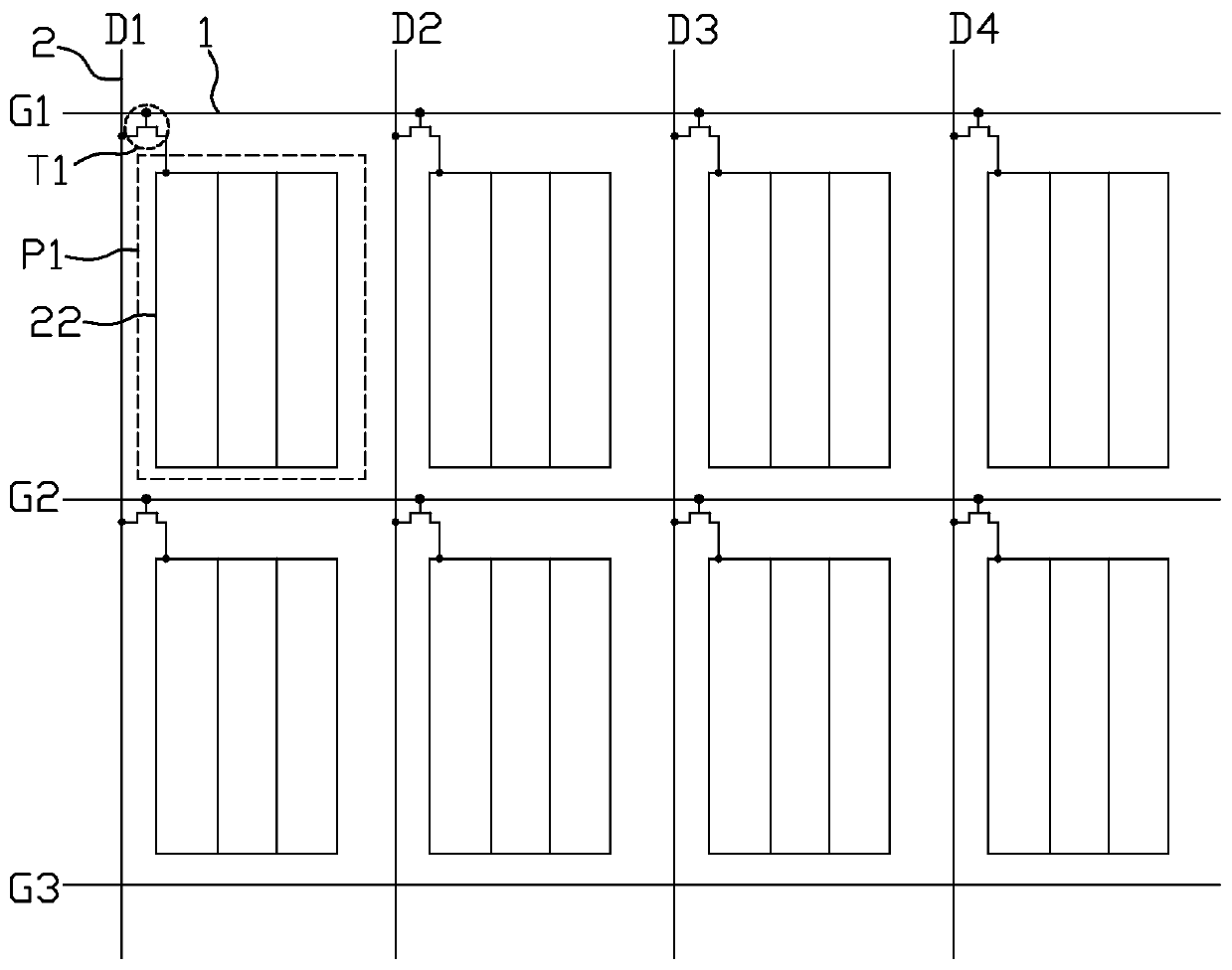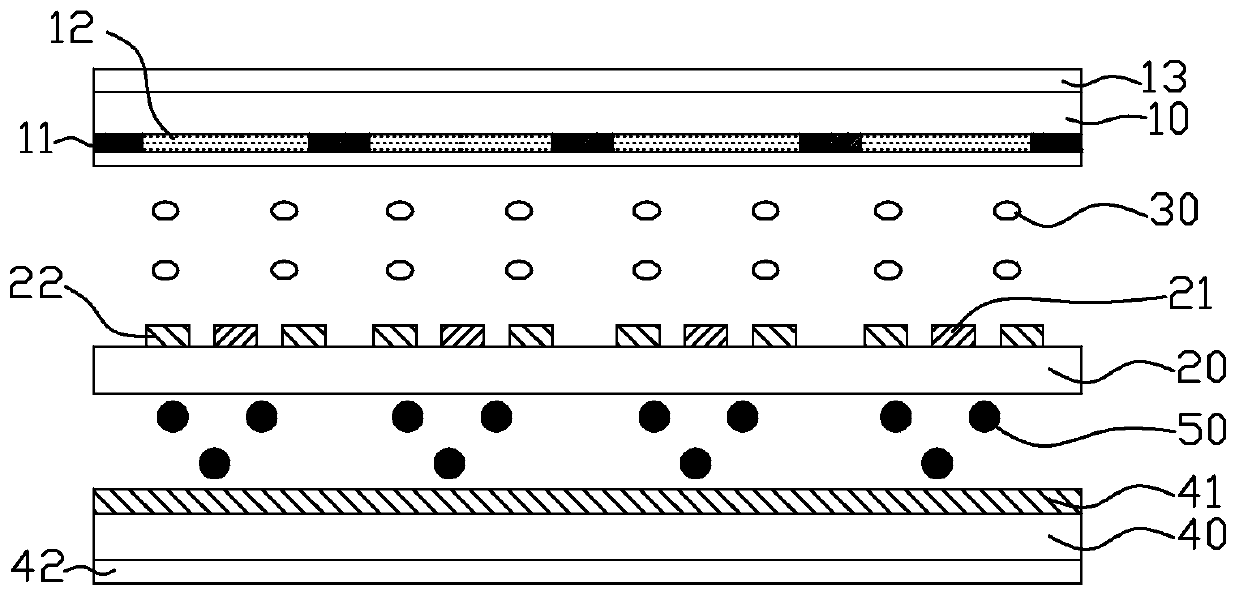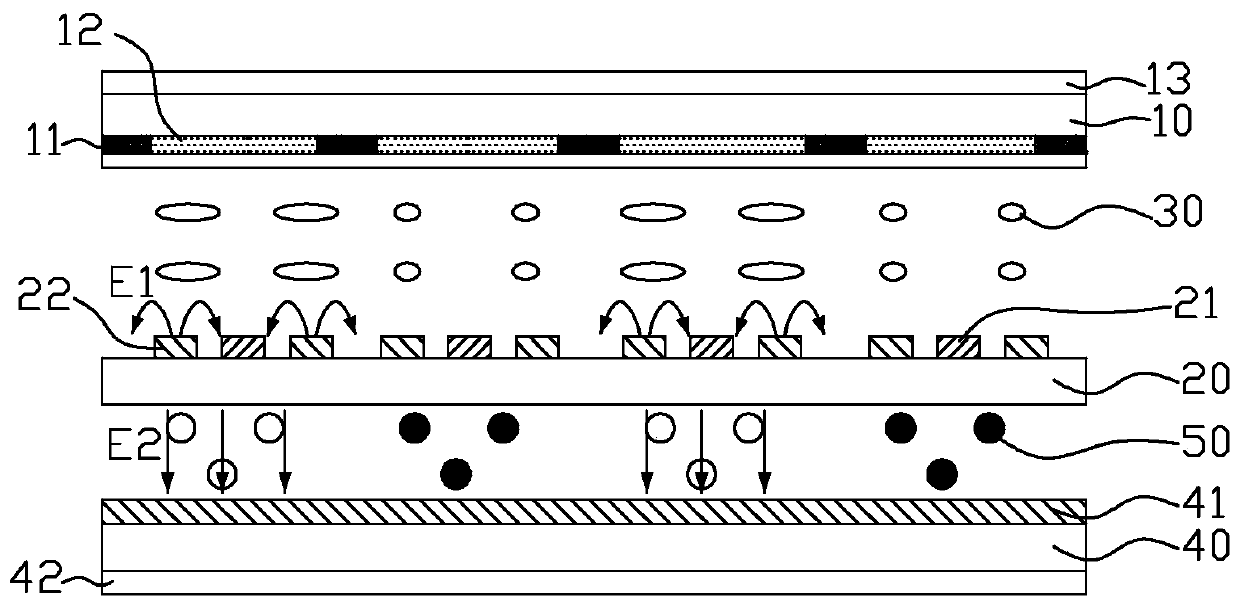Display device
A display device and substrate technology, which is applied in the direction of instruments, nonlinear optics, optics, etc., can solve the problems of light leakage and contrast reduction of display devices, and achieve the effects of increasing contrast, reducing brightness, and reducing light leakage
- Summary
- Abstract
- Description
- Claims
- Application Information
AI Technical Summary
Problems solved by technology
Method used
Image
Examples
Embodiment 1
[0031] figure 1 is a schematic plan view of the pixel electrode in Embodiment 1 of the present invention, figure 2 is a schematic cross-sectional structure diagram of the display device in the initial state in Embodiment 1 of the present invention, image 3 It is a schematic diagram of the cross-sectional structure of the display device in the first embodiment of the present invention when it is working, Figure 4 yes image 3 A simulation of light passing through a display device.
[0032] Such as Figure 1 to Figure 4 As shown, the display device provided by Embodiment 1 of the present invention includes a first substrate 10, a second substrate 20 disposed below the first substrate 10, and a liquid crystal layer 30 located between the first substrate 10 and the second substrate 20. The side of the second substrate 20 facing the liquid crystal layer 30 is defined by a plurality of first scanning lines 1 and a plurality of data lines 2 mutually insulated and intersecting ...
Embodiment 2
[0040] Figure 5 is a schematic plan view of the first electrode in Embodiment 2 of the present invention, Figure 6 It is a schematic cross-sectional structure diagram of the display device in the second embodiment of the present invention when it is working. Such as Figure 5 and Figure 6 As shown, the display device provided by Embodiment 2 of the present invention is the same as Embodiment 1 ( figure 1 and image 3 ) are basically the same in structure and working principle, the difference is that in this embodiment, the first electrode 41 is a patterned structure formed by a plurality of first electrode blocks 411 spaced apart from each other, and the third substrate 40 On the side facing the polymer liquid crystal layer 50, a plurality of second scanning lines 3 and a plurality of first common lines 4 are mutually insulated and intersected to define a plurality of second pixel units P2, and the plurality of second pixel units P2 are respectively connected to a plura...
Embodiment 3
[0046] Figure 7 It is a schematic diagram of the cross-sectional structure of the display device in the third embodiment of the present invention when it is working. Such as Figure 7 As shown, the display device provided by Embodiment 3 of the present invention is the same as Embodiment 2 ( Figure 6 ) are basically the same in structure and working principle, the difference is that in this embodiment, the second substrate 20 is provided with a second electrode 61 on the entire surface on the side facing the polymer liquid crystal layer 50 . The second electrode 61 is used to apply a DC voltage signal (for example, 0V), and the first electrode 41 is used to apply an AC voltage signal that fluctuates up and down centered on the DC voltage signal, so that there is a relatively large gap between the first electrode 41 and the second electrode 61. A large voltage difference (for example, 5V) is used to control the switching of the polymer liquid crystal layer 50 between the tr...
PUM
 Login to View More
Login to View More Abstract
Description
Claims
Application Information
 Login to View More
Login to View More - R&D
- Intellectual Property
- Life Sciences
- Materials
- Tech Scout
- Unparalleled Data Quality
- Higher Quality Content
- 60% Fewer Hallucinations
Browse by: Latest US Patents, China's latest patents, Technical Efficacy Thesaurus, Application Domain, Technology Topic, Popular Technical Reports.
© 2025 PatSnap. All rights reserved.Legal|Privacy policy|Modern Slavery Act Transparency Statement|Sitemap|About US| Contact US: help@patsnap.com



